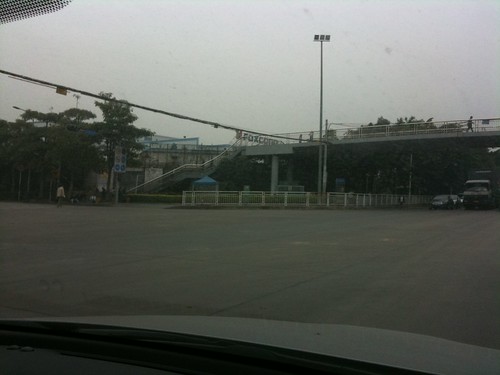Mico – A vibrant new way to talk with Copilot | Product Hunt – Strategy wise I have mixed feelings about it. People are already anthropomorphising LLMs and the full impact of that is still yet to be understood – I don’t think its universally good. However, we’ve already got there with Mico as a character. I imagine that fluent objects like Mico does make services stickier.
In this respect Mico looks like the kind of moral trap Meta, Bytedance have fallen into on their social media platforms.
Then there is the Clippy trauma now encapsulated as a drop of fleum – but that’s age bracketed so likely means nothing to younger cohorts.
On the other hand from a marketing effectiveness perspective, if Microsoft use Mico in brand advertising it might work well as a fluent object and boost their brand building performance. Reminded me a lot of British Gas’ Willo the Wisp character.
Business
The Pulse: Amazon layoffs – AI or economy to blame? – The Pragmatic Engineer
China
A Proud Superpower Answers to No One – by Ryan Fedasiuk – interesting mix of inward-looking and hubris.
The Loop: How American Profits Built Chinese Power
Consumer behaviour
Everyone is totally just winging it, all the time | Psychology | The Guardian
The Lonely New Vices of American Life – The Atlantic – Booze is down and weed is up, and that’s doing something to Americans as a nation.
Culture
Keep the Faith: Inside the modern northern soul revival | Farout magazine – I remember going to Northern Soul nights at the 100 Club on Oxford Street several years ago. Like house, it never disappeared it just went underground.
Finance
Sam Altman says OpenAI is not ‘trying to become too big to fail’ | FT and Sam Altman’s pants are totally on fire – by Gary Marcus
FMCG
Huggies maker Kimberly-Clark to buy Tylenol maker Kenvue for $40 billion | Axios
Gadgets
Moflin | CASIO – an LLM-powered answer to the Furby of the dot com era
Hong Kong
Hong Kong’s slumping commercial property market lures savvy tycoon-linked buyer | South China Morning Post – Savvy investors, including a buyer of a floor at Opus in Mid-Levels who is connected to the family of a Cambodian Chinese tycoon, are pouncing on Hong Kong’s slumping commercial property market to snap up bargains.
The 12th floor of 18 On Lan Street, a Ginza-style commercial building in Central, was handed over to Surplus Inc for HK$34 million (US$4.4 million) on Friday, according to Land Registry records. That represented a 65 per cent loss for the previous owner, Zhou Shubo, who bought the floor for HK$96 million in 2013.
Kanika Sam Ang was a director at Surplus, according to Companies Registry data. Sam Ang has been associated with the family of tycoon Tony Tandijono, who owns Cambodia-based President Airlines, Phnom Penh casino Holiday Palace and a travel agency in Hong Kong.
Ideas
Dubai Chocolate Gives the UAE a Taste of Genuine Soft Power | TIME
The Prophet of the Stateless Age: What Ian Angell Saw Coming
Innovation
New drivetrain technology for off-road vehicles moves safely in difficult terrain | TechXplore
Sweden, Ukraine to develop new weapons together | Spacewar
Japan
Japan Public Markets Under Attack – by Jesper Koll
Sony launches cheaper Japan-only PlayStation 5 console
Luxury
Inside Burberry’s lost year — and the battle to bring back its magic | Dark Luxury
Materials
Good vibrations: Ceramic material harvests electricity from waste energy | TechXplore
Media
Major Porn Studios Join Forces to Establish Industry ‘Code of Conduct’ | 404 Media – Adult Studio Alliance is founded by major porn companies including Aylo, Dorcel, ERIKALUST, Gamma Entertainment, Mile High Media and Ricky’s Room, and establishes a code of conduct for studios.
ReelShort and More: The Microdrama TV Series Gold Rush Is Here | Hollywood Reporter – following the Chinese media industry
Online
Gen Z Men So Scared of Getting Filmed They’ve Stopped Dating | Rolling Stone – It ends up fueling mistrust in many young men and can turn interactions into battlegrounds where boys feel they must protect their egos. Over time, empathy can go away and suspicion takes its place. Instead of feeling comfortable being genuine, sometimes they second-guess every word or message, wondering how it might be judged, shared, or mocked. But then it takes a turn and that’s why young men may retreat into online spaces that confirm the suspicions they have and help to reinforce negative stereotypes about girls. This causes a Cold War among genders where each side is suspicious of each other and doesn’t have empathy. In these divided spaces, interactions become games of defensive accusation and people grow untrustworthy of one another. – Failing is part of success and of life
Perplexity strikes multi-year licensing deal with Getty Images | TechCrunch
Ritson: Despite Snoop and Katy, Menulog’s collapse was inevitable – Mumbrella
Security
Theft Bisect – via Matt Muir ‘This exists because, seemingly, the Met Police are too dumb to make this themselves’ – you can read an explanation as to the ‘why’ and the ‘how’ behind its existence here, but generally this is just a smart idea, simply-executed.‘
Iridium develops compact chip for robust global GPS protection | Space Daily
CCP Wartime Decisionmaking | ChinaTalk
Australian spy chief accuses China of IP theft and meddling; experts say remarks reflect certain Australian officials’ attempt to mislead public – Global Times – An Australian spy chief on Tuesday accused Chinese security services of large scale IP theft and political meddling and said China failed to understand how their Western counterparts operate. The remarks came on the heels of comments by Australia’s Defense Minister Richard Marles, who hyped up China’s “military build-up.”
Chinese experts criticised the series of statements, saying they reflect some Australia politicians’ anxiety and bias toward China’s technological and military progress. Moreover, they said the spy chief’s remarks reveal an arrogance rooted in the belief that Western political system is superior – Global Times is a Chinese government published newspaper.
Software
ChatEurope – slow and would have been ok a few years ago
Nvidia faces Washington heat over alleged Huawei ties | DigiTimes – US lawmakers are ramping up scrutiny of China’s AI and semiconductor sectors, tightening oversight from corporate ties to capital flows to reinforce Washington’s edge in the global AI competition.
Mozilla announces an AI ‘window’ for Firefox | The Verge
$) Kimi Kimi on the Wall – by Kevin Xu – Interconnected
Taiwan
Mainland Chinese police offer cash rewards for tips on Taiwan’s ‘terrible’ influencers | South China Morning Post – trying to influence Taiwan influencer discussions
Technology
Microsoft CEO says the company doesn’t have enough electricity to install all the AI GPUs in its inventory – ‘you may actually have a bunch of chips sitting in inventory that I can’t plug in’ | Tom’s Hardware and Investors need to look beyond the ‘bragawatts’ in AI infrastructure boom | FT
Why Value Outlasts Valuation – On my Om
Web-of-no-web
Waymo In The Fast Lane | The future party – Waymo now allowed on select freeways in the US










